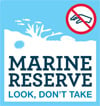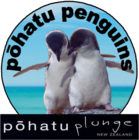Ever wondered what a Marine reserve was exactly?
Marine reserves.
What is a Marine Reserve?
A Marine reserve is a designated area that is protected from the sea surface to the sea floor, including the foreshore. There are 3 levels of Marine protection in NZ:
- Type 1 marine protected areas being “Marine reserves” which provide the highest level of protection.
- Type 2 marine protected areas: Areas protected under legislation and providing protection from the adverse effects of fishing
- Other marine protection tools Similar to Type 1 and 2, but they do not protect sufficient biodiversity to meet the protection standard
What can we do/not do in a Marine Reserve?
In a marine reserve, it is strictly forbidden to disturb, take, remove or kill any marine life, shells, rocks and driftwood. NO fishing or harvesting is allowed.
Activities such as swimming, snorkelling, boating and diving are still permitted as long as they do not harm marine life so keep your hands in your pockets please!
What is the purpose of a Marine Reserve?
A Marine Reserve’s purpose is to create an area free from alterations to marine habitats and life. It allows life and habitats to regenerate quicker and better. By doing so, it also provides scientists a regenerated/protected area to study as a comparison with non-protected areas.
Where are Marine Reserves established?
Marine reserves may be established in areas that:
- contain underwater scenery, natural features, or marine life of such distinctive quality, or
- so typical, beautiful or unique that their continued preservation is in the national interest.
How many marine reserves are there in NZ and when were they created?
There are 44 (2019 data) marine reserves in NZ and they are all managed by the Department of Conservation (D.O.C). The Marine Reserves Act was passed in 1971. New Zealand’s first marine reserve was created in 1975 at Cape Rodney-Okakari Point (Goat Island Marine Reserve) in the North Island.
What are the benefits of a Marine reserve?
Marine reserves are recognised to bring many benefits because it helps:
- The Conservation of biodiversity
Marine Reserves protect a whole marine ecosystem. It helps to conserve biodiversity and allows ecosystems to return to a more natural state. Some species increase in diversity, abundance and size in Marine Reserves.
- To Better manage the marine environment
Thanks to Marine reserves we understand better the marine ecosystem and how it evolves naturally, without human intervention. Then we know better how to protect them.
- The Community
Marine Reserves can benefit the whole community through environmental education and management, by connecting people to their 'big blue backyard' and creating unique attractions that boost the local economy.
What about Pohatu Marine reserve?
Pohatu marine reserve was created in 1999. It was the first marine reserve created on the East Coast of South Island. The second marine reserve in the same area is Akaroa marine reserve created in 2014.
What species can we see in Pohatu Marine reserve?
Pohatu Marine Reserve hosts a variety of species such as:
|
 |
|
|
-192.jpg) |
|
|
 |
|
|
 |
 |
-772.jpg) |
||
|
 |
|
|
 |
|
What Can I do to help protect Marine Reserves?
Be aware of Marine Reserves boundaries (look at the map) and of the rules. Strictly respect the sign saying:

If you see any suspect behaviour or activity from other visitors of the Reserve, please inform as soon as possible the D.O.C
Here are the useful numbers:
| 0800POACHER | 0800DOCHOT | 0800FISHERIES |
Boundaries of Banks peninsula's marine reserves: Akaroa head and Pohatu.
.jpeg)
(Image source from DoC website)

